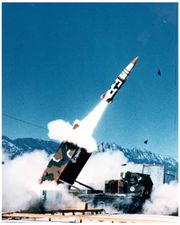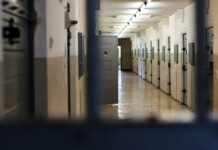 A new arms control agreement between the United States and Russia was reached yesterday that would reduce the number of nuclear weapons deployed by about one-third.
A new arms control agreement between the United States and Russia was reached yesterday that would reduce the number of nuclear weapons deployed by about one-third.
U.S. President Barack Obama called the treaty the most comprehensive arms control agreement in nearly two decades. “It significantly reduces missiles and launchers and puts in place a strong and effective verification regime. And it maintains the flexibility that we need to protect and advance our national security, and to guarantee our unwavering commitment to the security of our allies.”
The two leaders are to sign the treaty April 8 in Prague, but the agreement must be ratified by the U.S. Senate and the Russian Parliament before it takes effect.
U.S. and Russian negotiators have been working for nearly a year on the new pact. U.S. Secretary of State Hillary Clinton said it will give Russia and the United States more credibility in non-proliferation and in dealing with countries like Iran and North Korea on nuclear issues.
Republican Senator Richard Lugar, a long-time champion of nuclear arms control efforts, welcomed Friday’s announcement and said he looked forward to working quickly to “achieve ratification.”
U.N. Secretary-General Ban Ki-moon called the treaty an “important milestone” and said he believed it would give “significant impetus” to a U.N. conference in May to review the global Nuclear Nonproliferation Treaty.
NATO chief Anders Fogh Rasmussen said the new treaty could encourage additional cooperation between Russia and NATO countries.
The new 10-year treaty will replace the Strategic Arms Reduction Treaty (START 1 agreement) signed in 1991 by U.S. President George H.W. Bush and Soviet President Mikhail Gorbachev. That treaty came into force in 1994 but expired in December.



















